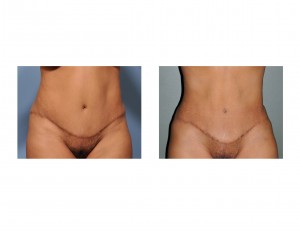
Provided one does not gain a large amount of weight or become pregnant after a tummy tuck, it is essentially a permanent procedure. Permanency in a tummy tuck is defined as never returning to what one used to look like…which does not mean there may not be some long-term changes to the tummy tuck result. This raises the question of how often do tummy tucks undergo secondary modifications for contour changes. (not revisions for primary tummy tuck problems)
In the January 2014 issue of Plastic and Reconstructive Surgery, article appeared entitled ‘The Incidence and Management of Secondary Abdominoplasty and Secondary Abdominal Contour Surgery’. A retrospective review from a single practice of 562 patients who underwent abdominal contouring procedures (tummy tuck with or without liposuction) over an eight year period. A total of seventy-three of these patients (13%) underwent secondary abdominal contouring procedures although only forty-six of them had records available to be studied.

It is often said that a tummy tuck is a permanent procedure but the human body, particularly the midsection, continues to undergo some changes as it ages. It should be no surprise, therefore, that some tummy tuck patients will want/need secondary touch-ups or further abdominal contouring efforts. What drives a patient to have a secondary aesthetic procedure is multi-factorial so putting an exact number to the incidence is far from precise.
But suffice it to say, as this paper illustrates, tummy tuck results can and do change and the most common of these changes is the accumulation of fat over time. Thickness of the trunk and abdominal skin flaps can occur which is subsequently treated by liposuction.
Dr. Barry Eppley
Indianapolis, Indiana


